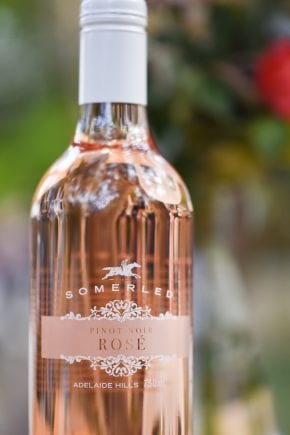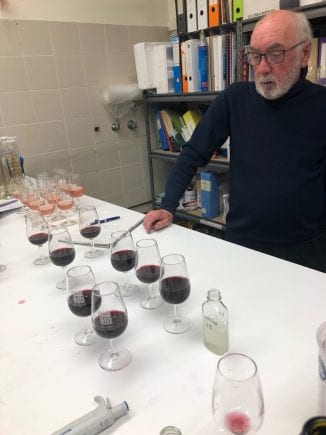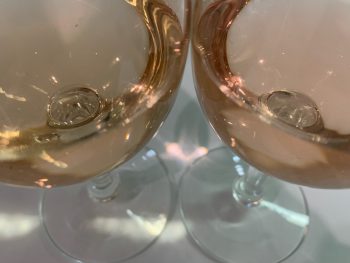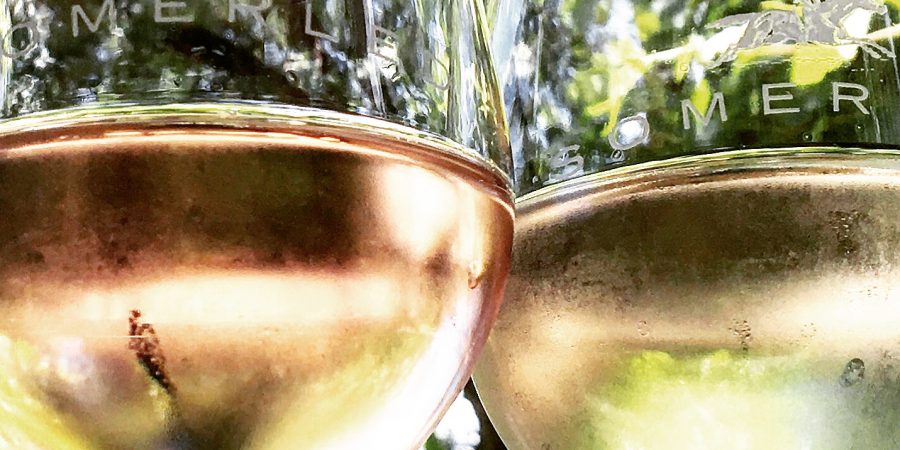 It’s been a long wait, but we’re mere weeks away from welcoming our 2021 Pinot Noir Rosé!
It’s been a long wait, but we’re mere weeks away from welcoming our 2021 Pinot Noir Rosé!
I can hear you all breathing a collective sigh of relief (you and me both!).
And just in time for the warmer weather too – the perfect time to enjoy a cold glass of this Somerled favourite.
The wine will be heading to Boutique Bottlers in the Barossa today (perhaps even as we speak!) and will be making its way into bottles on Monday.
But there are a couple of steps that need to happen before Rob is happy to send it on its way?
I joined him at the winery last week to learn more about the process.
Before we get to that though, let’s have a quick chat about additives…
Common Wine Additives
Wine additives have been given a bit of a bad wrap. Particularly since the increasing popularity of “natural wines”. But the fact of the matter is that some food products (including wine) are unstable.
And the intention of these additives is not to adulterate the wine, but to stabilise it. Wines have the potential to last longer when they are stable, which is really handy if you want to put them in the cellar for a few years.
And some additives aren’t really additives at all.
Sulphur
Sulfites are used to kill unwanted bacteria and yeasts in the winemaking process. A lot of people think they react to sulfur in wine. However, sulfite sensitivity affects only about 1% of the population. And keep in mind, wine usually has about 150 ppm of sulfur added whereas dried fruit has 1000 ppm.
Yeast
This one is obviously pretty important as it turns sugar into alcohol (or grapes into wine in this case!). Some winemakers prefer to use the use yeast which is floating around the winery to start the fermentation process. While others prefer to have a bit more control over the process. In that case, specific strains are added depending on the flavour and aroma characteristic they are trying to encourage.
Tannin
Wine gets most of its tannin from the seed and skins of the grapes. It gives the wine structure. Oak aging in barrels also adds small amounts of tannin from the wood.
Sugar
Chaptalisation is the process of adding sugar to grape juice in order to increase the final alcohol level in the finished wine. Adding sugar doesn’t make a wine sweeter because the sugar is consumed by the yeast when it is fermented into alcohol. Chaptalization can add up to 3% ABV to a wine.
It is only legal in areas where grapes struggle with ripeness. Adding cane sugar is not legal in Australia, California, Argentina, Southern France and South Africa. Producers can however add sugar-rich grape concentrate to simulate the same results, as the use of grape concentrate is not considered chaptalisation.
Loving our blog? Sign up for weekly updates straight to your inbox…
It’s at this point in the discussion that we can start talking about the Rosé again…
Fining
 We’ve talked about fining on a couple of different occasions.
We’ve talked about fining on a couple of different occasions.
Fining agents react with all the unrequired compounds in the wine (like the leftover yeast cells which can cause cloudiness). They bind to these compounds and form clumps that sink to the bottom of the tank. This makes them easier to remove when the wine is pumped off the clumpy bits and filtered.
The camera on my phone is not working. It’s super annoying given how much QR code checking in we have to do these days. And I’m missing so many videoing opportunities to embarrass my 5-year-old with when he’s older.
My point being, I wasn’t able to grab a photo of Rob doing the fining trial on the Rosé. But this was a snap from a couple of years back when he was doing something similar with what looks like Rosé and maybe Tempranillo just so you can visualise it.
He goes to the lab, lines up a heap of glasses with the wine in them and then adds increasing amounts of different fining agents. The trick is to find the one which does the job without interfering with the flavour and aroma. and the only way to do that is to taste every one of them! Tricky for you and me… a piece of cake for someone with a seasoned palate.
Acid control
The pH of wine is crucial to how it tastes (and how long it will last). In a perfect vintage the wines will be more naturally in balance. So what to do when it’s not perfect?
De-acidifiers Adding Calcium Carbonate to wine will reduce high acid levels and increase the pH. This practice is common in areas that have cooler weather and ripening is challenging.
Acidifiers What if there’s not enough acidity? Tartaric Acid, Malic Acid and Citric Acid or any blend thereof could help balance the wine. Adding acid is common with lower acidity grapes in warmer regions.
For reasons beyond Rob, the 2021 Rosé took a very long time to get through primary fermentation (which is why we’ve all been waiting so long for its return!). And then, in a complete turnaround, it raced through malolactic fermentation. Not ideal as this knocked the acid balance around a little.
Luckily Rob was able to make a couple of very fine adjustments to bring it back into perfect balance. Again, only something he can figure out with a couple of rows of glasses in the lab.
All I can say is… thank goodness for Rob!
I did manage to get one photo from Lucy when they did another “tasting”at home last night. The one on the left is the 2020 (the last bottle in existence!) and the one on the right is 2021. What a gorgeous colour!

Taking pre-orders now!
Want to make sure you’ve got your name on a couple of bottles of the 2021 Rosé in time for summer??!
There will be a bottle in your November packs, but if you would like to add some more, please let me know via email.
